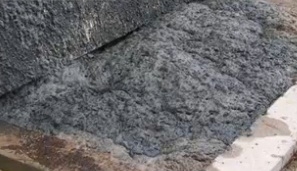
Features
Applications
Environment Protection
Manure Management
Protection
Research
Swine
Caution urged when pumping from deep pits
September 13, 2012 by By Angela Rieck-Hinz Shawn Shouse

September 13, 2012, Ames, IA — Last year there were several documented cases of manure pit fires and explosions in Iowa. Not all of these incidents happened during agitation and pumping, nor did all of the pits have foam present when the fires or explosions happened. Iowa State University Extension agricultural engineers say these episodes highlight the caution needed when agitating and pumping manure from pits beneath buildings.
Liquid manure in pits undergoes slow decomposition, which creates several gases including methane and hydrogen sulfide, both of which can create dangerous situations. The rate of gas release from the manure can be drastically increased when the manure is agitated (stirred) during pumping. This increase is especially true for hydrogen sulfide, which can have a lethal paralyzing effect.
In addition to the concern about gas release from pumping and agitation is the concern about rapid gas release in pits with excessive foam. It is believed that pits with substantial foam prevent the normal release of methane from the deep-pit facilities. Captured methane can be released quickly when the foam is disturbed by agitation or other activities such as power washing. The rapid release of methane mixing with fresh air can create an explosive mixture. If this mixture comes into contact with an ignition source, it can cause a flash fire or explosion.
To minimize risk of injuries and flash fires, manure handlers should follow these steps:
- Review your emergency action plan with all workers and have emergency contact numbers available at the site. The publication Emergency Action Plans at http://www.extension.iastate.edu/Publications/PM1859.pdf has additional information.
- Prior to agitation or pumping, turn off electrical power to any non-ventilation equipment such as lights and feed motors, and extinguish any pilot lights or other ignition sources. Fully open all ventilation curtains or ventilation pivot-doors, but leave walk-in doors locked to prevent human entry.
- Run ventilation fans at maximum speed.
- Ensure that all people are out of the building and clearly tag all doors noting that the building is unsafe for entry during agitation and pumping. The Iowa Pork Producers Association has door hang tags available to Iowa pork producers and commercial manure applicators. To request tags, please contact the IPPA at (515) 225-7675.
- If significant foam is present, consider pumping without agitation to reduce the risk of fire or explosion, and monitor solids accumulation to decide if agitation is advised at the next pumping event.
- Do not agitate manure until manure has been pumped and level is at least two feet below the slats.
- When agitating the manure keep the jet of pressurized manure below the liquid surface. Don’t let the jet of manure strike walls or columns in the pit.
- Stop agitation when the manure level does not allow agitation below the liquid surface.
- Continue maximum ventilation for 30 minutes to an hour after pumping has ended before re-entering the building.
- Never enter a building or manure storage structure when liquid manure is being agitated or pumped.
A video discussing safety practices for pumping from deep pits can be found at: http://vimeo.com/15463270.
Manure gases are an unavoidable by-product of liquid manure storage. Strict safety protocols along with proper ventilation and agitation practices can minimize the risk of flash fires and explosions during manure pumping.
The following Iowa State University contacts are available to answer questions related to safety practices for pumping from deep pits.
- Shawn Shouse, extension agricultural engineer, 712-769-2600, sshouse@iastate.edu
- Kris Kohl, extension agricultural engineer, 712-732-5056, kkohl1@iastate.edu
- Greg Brenneman, extension agricultural engineer, 319-337-2145, gregb@iastate.edu
- Kapil Arora, extension agricultural engineer, 515-382-6551, pbtiger@iastate.edu
- Dan Huyser, extension agricultural engineer, 641-435-4864, dehuyser@iastate.edu
- Jay Harmon, professor and extension agricultural engineer, 515-294-0554, jharmon@iastate.edu
- Steve Hoff, professor of agricultural and biosystems engineering, 515-291-2726, hoffer@iastate.edu